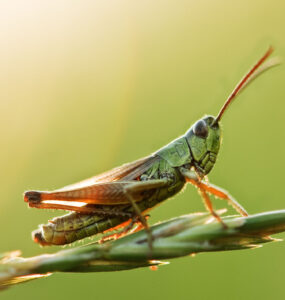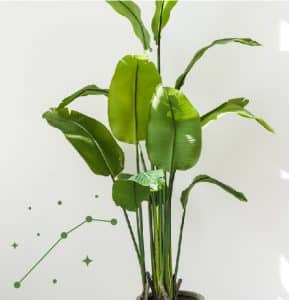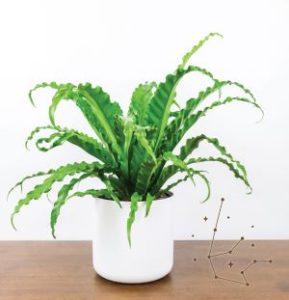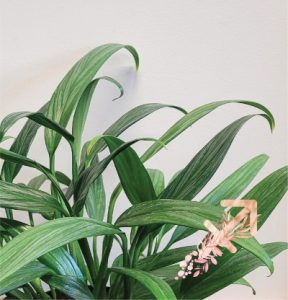Chemical-Free Ant Control
by Rob Sproule
Before we talk about killing our ants, lets take a moment to be thankful for living in one of the least ant-infested countries in the world. I’ve seen leaf-cutter ants strip shrubs bare before my eyes and almond sized hunter-killer ants that will make a grown man’s arm go numb for days. I’ve watched a swarm of army ants march take 20 minutes to march past me and seen Cambodian villages built entirely on stilts sitting in water to escape the swarms.
Even as we scatter, mow, and boil these critters into submission, let’s take a moment to remember how incredible they are. An ant colony functions so seamlessly that it’s more accurate to refer to it as an organism rather than a group of individuals. Colonies can be millions strong and thousands of miles in breadth. Ant societies have complex class structures, keep slaves, and herd other insects like cattle in order to feed the collective.
If you combine the weight of every ant in the world, it would be heavier than the combined weight of humanity. They’re indigenous to every landmass except Antarctica and have been around since dinosaurs wondered how to get rid of them. To be blunt: ants aren’t going anywhere.
Albertan Ants 101
Of the estimated 22,000 species of ants world-wide, Alberta has about 93 of them. Only a few of these afflict us in Edmonton (many are endemic to southern regions, the mountains, or the woodlands).
The little black ants in your yard are probably common Field Ants (the Formica genus of the family). They’re about as common as dirt and their long list of aliases includes Wood, Thatch, and Mound ants.
The ants in your yard are probably harmless and may even be beneficial. Their tunnelling aerates the soil and they often prey on nastier critters. If they’re living in a little travelled area and not offending you, consider living and letting live.
If you want/need to evict them, you’re not alone. Ant hills are unsightly and can spread quickly. Ants can also increase nearby populations of aphids, which they farm – and actually herd from plant to plant – for their tasty honeydew secretions. Red ants also have a painful bite and should be taken care of right away.
What Attracted them to your Yard
Ants love loose, sandy soil, which makes old lawns with depleted soils (typically rarely fertilized) favourite haunts. They often establish colonies in and around root systems to take advantage of the natural tunnels therein. This can spell trouble for many plant species, and the reason they’re so prevalent in veggie gardens where you’ve kindly tilled the soil for them.
Ants have a famous sweet tooth (well, sweet mandible). They swarm into yards littered with tasty cherries, apples, or aphids (for their honeydew). For obvious reasons, they seek out low traffic areas and if your lawn is struggling it’s going to be less likely to grow aggressively enough to repel them.
If the nest is near your home, eradicate it and check for cracks in your foundation for foragers to wander into. If the ants are small and peach-coloured with a black rump, they’re potentially invasive Pharaoh ants and live-and-let-live goes out the window (their namesake is one of the Biblical Egyptian plagues). This also applies for Carpenter ants, which are large, almost black, and have a triangular head.
Water is a Weapon
While there are several chemical control options – with varying toxicity – I suggest them only as a last resort. There are a host of organic ways to either kill them or convince them to move. I’m going to discuss my favourites but a quick internet search will reveal dozens more home remedies… with vastly varying degrees if effectiveness and/or just plain kookiness.
The earlier you catch them, the better. Field ants build conspicuous mounds in brightly lit locations. The more you kick, mow, and soak them down, the more likely they will be to abandon the spot in frustration. If you have a self-propelled lawnmower, give ’em some spinning wheels. The business end of a hose is surprisingly effective, even against hard-to-reach, under-the-sidewalk and in-driveway-crack colonies.
Ants hate excessive water, which makes them more prevalent during dry spells and in un-irrigated yards. The caveat to this is that while you may see them more during wet years, it’s only because the wet earth has forced underground dwellers to the surface, like worms after a rain.
The business end of a hose is surprisingly effective, even against hard-to-reach, under-the-sidewalk and in-driveway-crack colonies. Soaking the hills while you water the flowers collapses their tunnels; keeping them mud-pits makes new tunnelling impossible.
If the hose doesn’t work, look to the water. Bring a large pot to a viciously rolling boil. With a spade, dig deep into the hill and turn it up, ideally exposing the Queen and/or nursery chambers. Scald the works with boiling water; they hate that.
Home Remedies Galore
Here are just a few of the home-remedies I’ve come across. I’m a fan of either letting live or using water, so I can’t endorse the effectiveness of any of them.
A lot of people rave about how effective Borax, which is an old-fashioned cleaning agent, is for controlling ants. Typically, it’s mixed with icing sugar or jam to act as the proverbial poison apple. While Borax contains boric acid (a common ant-killing ingredient), they aren’t the same thing.
I debated including this method in a column on “natural controls,” but decided to because borax is naturally occurring and hasn’t been found to be either carcinogenic or accumulating in the body. Ultimately, it’s your decision whether or not to use it, but if you do please wear gloves (it’s a skin irritant), a mask, and use in moderation.
Sprinkling diatomaceous earth is an effective way to make them move. It won’t kill them, but the sharp silica crystals are like razor wire to ants. Wear a mask while applying. You can buy it at most large garden centres.
As for things you can sprinkle on and around the infested area in order to clear the ants: cornmeal and icing sugar, baking powder and icing sugar, used coffee grounds, minty essential oils, cream of wheat, Equal (the sugar substitute), vinegar, cinnamon, cucumbers, mint leaves, table salt, and chalk (the rumour is that ants can’t walk across chalk)



















